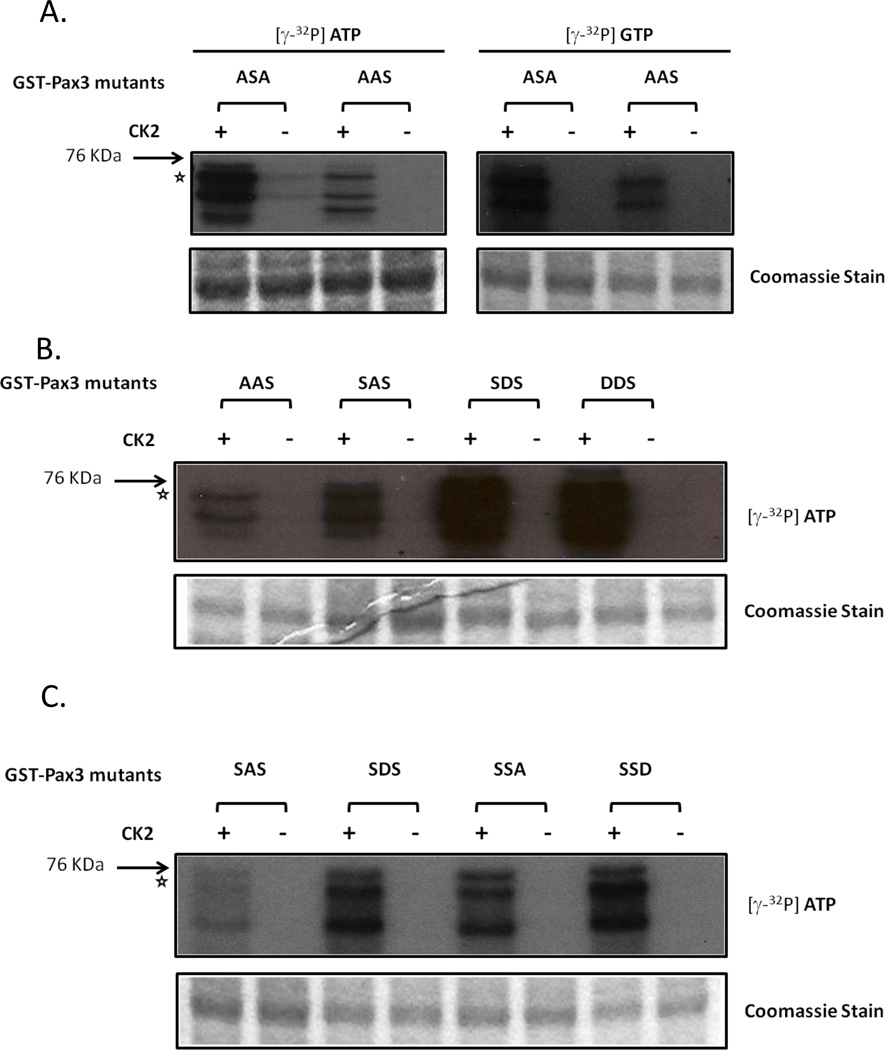Figure 3.
Extent of phosphorylation of Ser205 and Ser209 by CK2. In Vitro kinase assays were conducted using bacterially expressed and purified (A) GST-Pax3[ASA] or GST-Pax3[AAS] with either ATP or GTP; (B) GST-Pax3[SAS], GST-Pax3[SDS], GST-Pax3[SSA], GST-Pax3[SSD] and only ATP; or (C) GST-Pax3[AAS], GST-Pax3[SAS], GST-Pax3[SDS] and GST-Pax3[DDS] and only ATP. In all cases the in vitro kinase assay was performed as described in the Materials and Methods using 0.02U of commercially available, purified CK2. The star indicates the mobility of the GST-Pax3 protein with lower bands representing commonly seen degradation products. A Coomassie stained gel demonstrates the presence of equal amounts of GST proteins in all assays.

